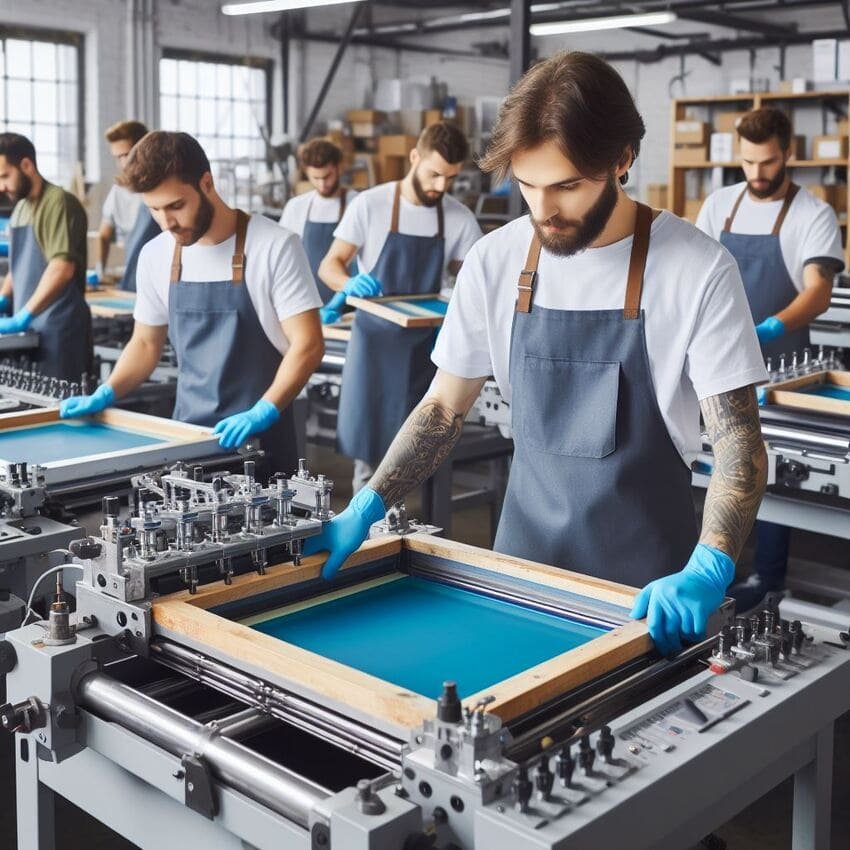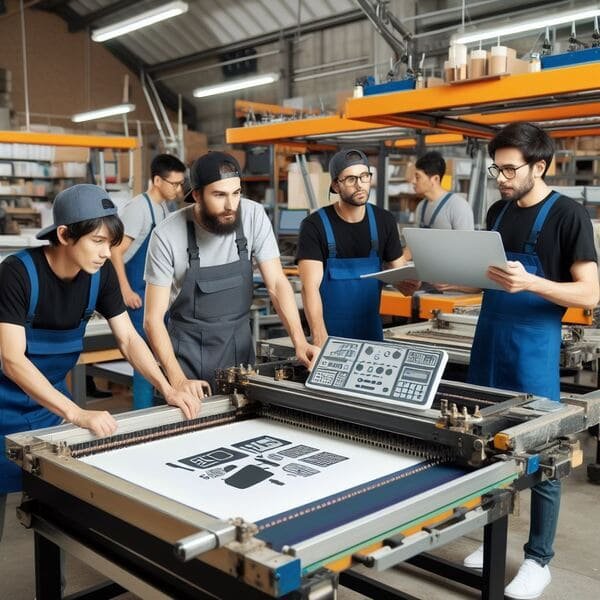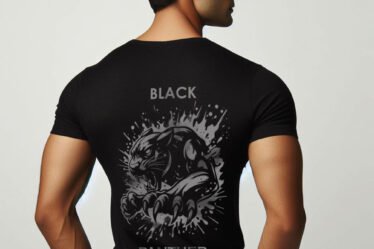
When it comes to creating personalized t-shirts, two printing techniques stand out: Screen Printing on T shirts and Sublimation Printing on T shirts. Both offer unique benefits, but which one is right for your graphic design T-Shirt project? Let’s dive into the differences between these methods to help you decide which Printed T-shirt option suits you best.
Screen Printing
Screen Printing is a classic method involving stencils and layers of ink applied directly onto the fabric. Each color in your graphic design T-Shirt requires a separate stencil, making it ideal for simple designs with a limited color palette.
Pros of Screen Printing
- Vibrant Colors: Achieve bold and eye-catching hues that stand out on your Customized tees.
- Durability: Enjoy long-lasting prints that withstand numerous washes, perfect for everyday wear.
- Suitable for Bulk Orders: Screen Printing becomes cost-effective when printing large quantities of Tshirts, making it ideal for events or merchandise.
Cons of Screen Printing
- Limited Detail: Fine details in your Design T-Shirt may not be as sharp due to the thickness of the ink.
- Setup Time: Setting up screens for each color can be time-consuming, making it less suitable for small batches.
Sublimation Printing
Sublimation printing is a newer method. It involves using heat to transfer dye onto the surface. This dye turns into a gas and sinks into the material, creating vibrant and detailed prints.
Pros of Sublimation Printing
- High Detail: Capture intricate details and photographic images with precision on your Printed T-shirt.
- Unlimited Colors: Enjoy the freedom of using as many colors as you want in your Design T-Shirt without extra setup.
- Soft Feel: Experience a smooth and comfortable finish as the dye becomes part of the fabric.
- Quick Turnaround: Get your Custom Tshirts ready in no time with minimal setup required.
Cons of Sublimation Printing
- Limited Material Compatibility: Sublimation Printing works best on polyester fabrics, restricting your options for Custom Tshirts.
- Not Suitable for Dark Colors: Colors may appear subdued when printing on dark T-shirts, affecting the vibrancy of your design.
- Initial Equipment Investment: While cost-effective for small orders, purchasing specialized equipment like a sublimation printer and heat press can be expensive.

Let’s take a look at how these two techniques compare in different ways.
Process
- Screen Printing: First, you make a stencil, or screen, for each color in your design. Then, you use a tool called a squeegee to push ink through the screen onto the fabric. It’s a hands-on process where you have to set up screens, divide colors, and make sure everything lines up perfectly for each layer of color on your tees.
- Sublimation Printing: Sublimation Printing on T shirts is a bit like magic! First, you print your design onto special paper using special inks. Then, with the help of heat and pressure, the design magically transfers onto the fabric. The inks turn into a gas and become one with the fabric, making the design last a long time.
Fabric Compatibility
- Screen Printing: Works with lots of different types of fabrics like cotton, polyester, mixes, and special fabrics. But it works especially well with cotton and fabrics that are a mix of cotton.
- Sublimation Printing: Best for polyester fabrics or materials with a polyester coating. When you use the sublimation process, the polyester fibers grab onto the sublimation inks, making the prints colorful and durable.
Color Vibrancy and Detail
- Screen Printing: This stuff gives you really bright colors and covers things up well, perfect for strong and solid designs. You can do fancy details and tricky patterns, but it might not work as well for super tiny details.
- Sublimation Printing: Makes super colorful and detailed prints with tons of colors to choose from. The inks go deep into the fabric, so your prints stay bright even after lots of washing, and they feel really soft too.
Design Complexity
- Screen Printing: Good for both easy and hard designs, but if your design has lots of colors, you’ll need different screens for each color. This can take longer to set up and cost more.
- Sublimation Printing: Great for tricky designs like photos, color blends, and fancy patterns. Unlike screen printing, you don’t need separate colors or screens for each part, which saves money, especially for designs with lots of colors.
Durability
- Screen Printing: This stuff lasts a long time – even after lots of washes, the prints don’t fade or crack much.
- Sublimation Printing: This ink sticks really well to the fabric, so even after many washes, the prints don’t fade or wash away. It’s like the ink becomes a part of the fabric instead of just sitting on top.
Cost and Production Efficiency
- Screen Printing: It’s cheaper when you make a lot of things at once because each one costs less. But if you’re only making a few, the setup costs for screens and colors can make it more expensive.
- Sublimation Printing: It’s usually cheaper if you’re ordering a moderate amount because you don’t have to pay extra for screens or colors. But at the start, the printers and inks for sublimation might cost more than screen printing machines.

Which one is better?
Deciding between screen printing and sublimation printing depends on different things like what your project needs, how much money you have, how you want things to look, and how much you’re making. Each way has good and bad points, and what’s good for one thing might not be good for another. Here are some things to think about to help you pick which one works best for you:
Fabric Type
If you’re using fabrics made of polyester or a mix with polyester, sublimation printing is usually the way to go because it works well with those materials. But screen printing works on all sorts of fabrics like cotton, blends, and special ones too.
Design Complexity
Sublimation printing is great for detailed designs like photos and color blends, and you don’t need separate screens for each part. Screen printing can handle complex designs too, but for lots of colors, you need separate screens, which can be costly and time-consuming to set up.
Color Vibrancy
Sublimation printing usually gives you really bright and strong colors because the inks soak into the fabric, making the prints stay colorful even after washing. Screen printing can also make colors pop, but sometimes the ink might not cover as well depending on the fabric and design.
Durability
Both screen printing and sublimation printing can make prints that last through washing and wearing them often. But sublimation prints stick to the fabric on a really tiny level, making them super tough and not likely to fade or crack as much over time.
Production Volume
Screen printing is usually cheaper when you’re making a lot of things because you can spread out the setup costs over more items. But if you’re only making a few things, sublimation printing might be cheaper because you don’t have to pay for screens or separate colors.
Budget
Think about how much money you have for buying equipment, materials, and making things. Sublimation printers and inks might cost more at first compared to screen printing gear, but if you’re making just a few things, the cost for each one might end up being lower because you don’t have to pay for setting things up.
Hot ironing result: When a hot iron is applied to a sublimation printed t-shirt, it can risk distorting the print, causing colors to bleed or fade, and may damage the fabric due to the heat sensitivity of polyester. For a screen printed t-shirt, immediate damage may not be visible as the ink is typically cured, but repeated exposure to heat can weaken the ink bonds, leading to eventual cracking or peeling of the print.
In summary, when it comes to custom-designed tees, t-shirts, or tshirts, both screen printing and sublimation printing have their distinct advantages. Screen printing stands out for its ability to deliver vibrant prints on various fabric types, making it a versatile option. On the other hand, sublimation printing offers unparalleled color vibrancy, exceptional detail reproduction, and durability, especially on polyester fabrics. When selecting the ideal printing method for your custom design on an ecommerce website, consider factors such as fabric type, design complexity, durability needs, and production volume to make the best choice.



